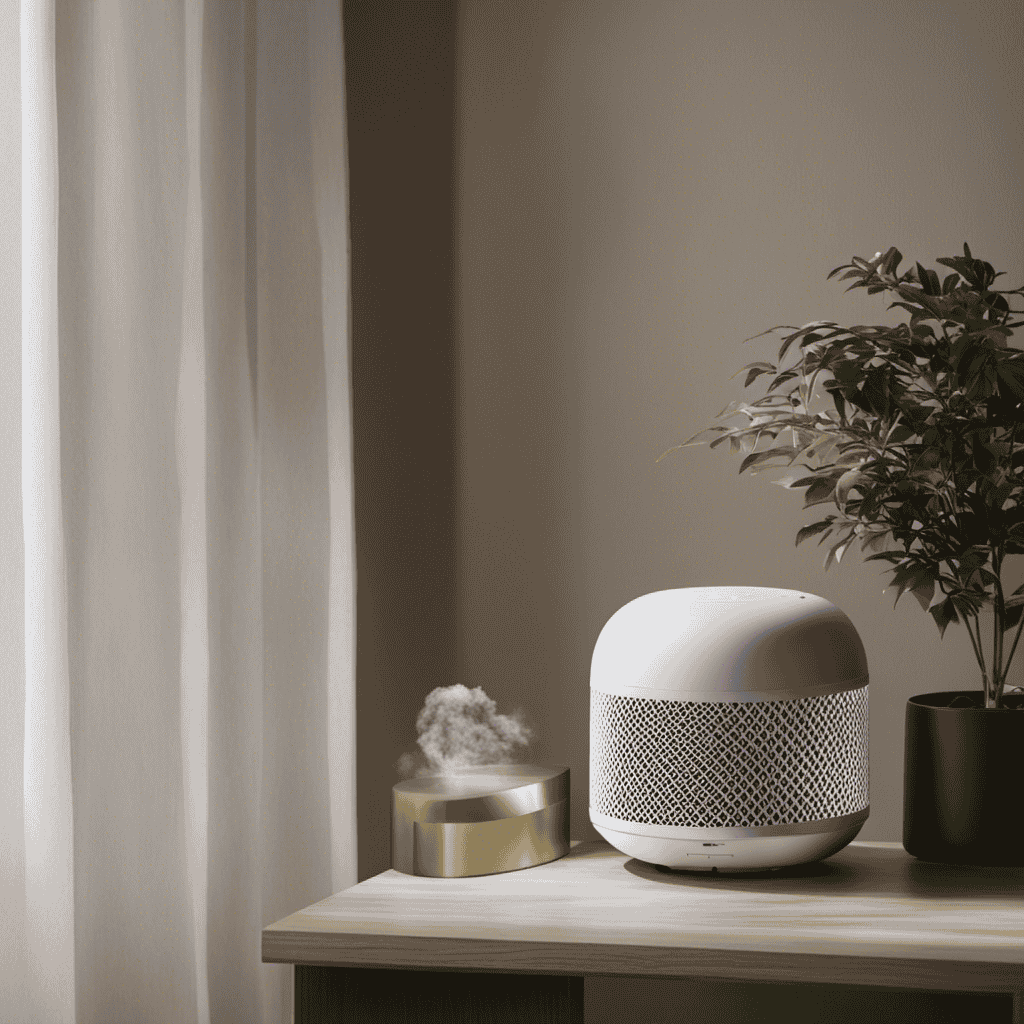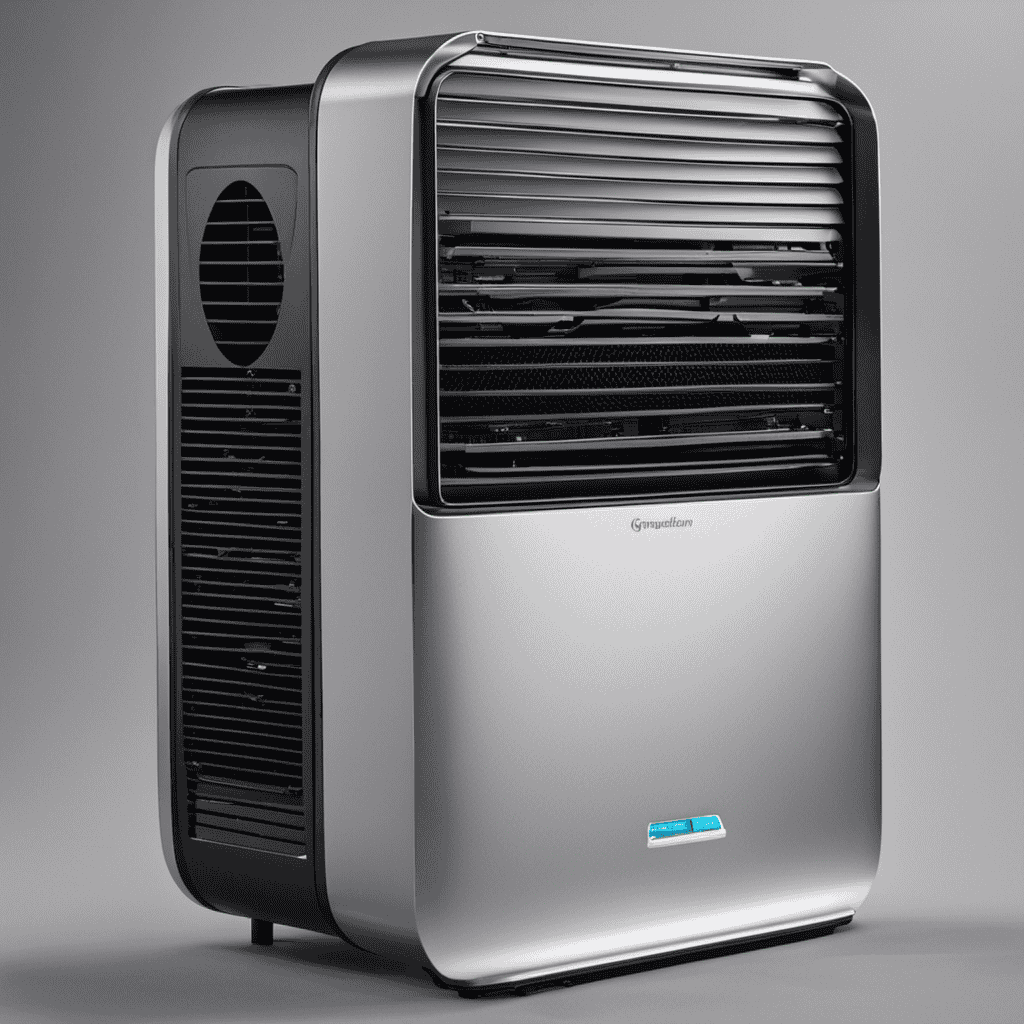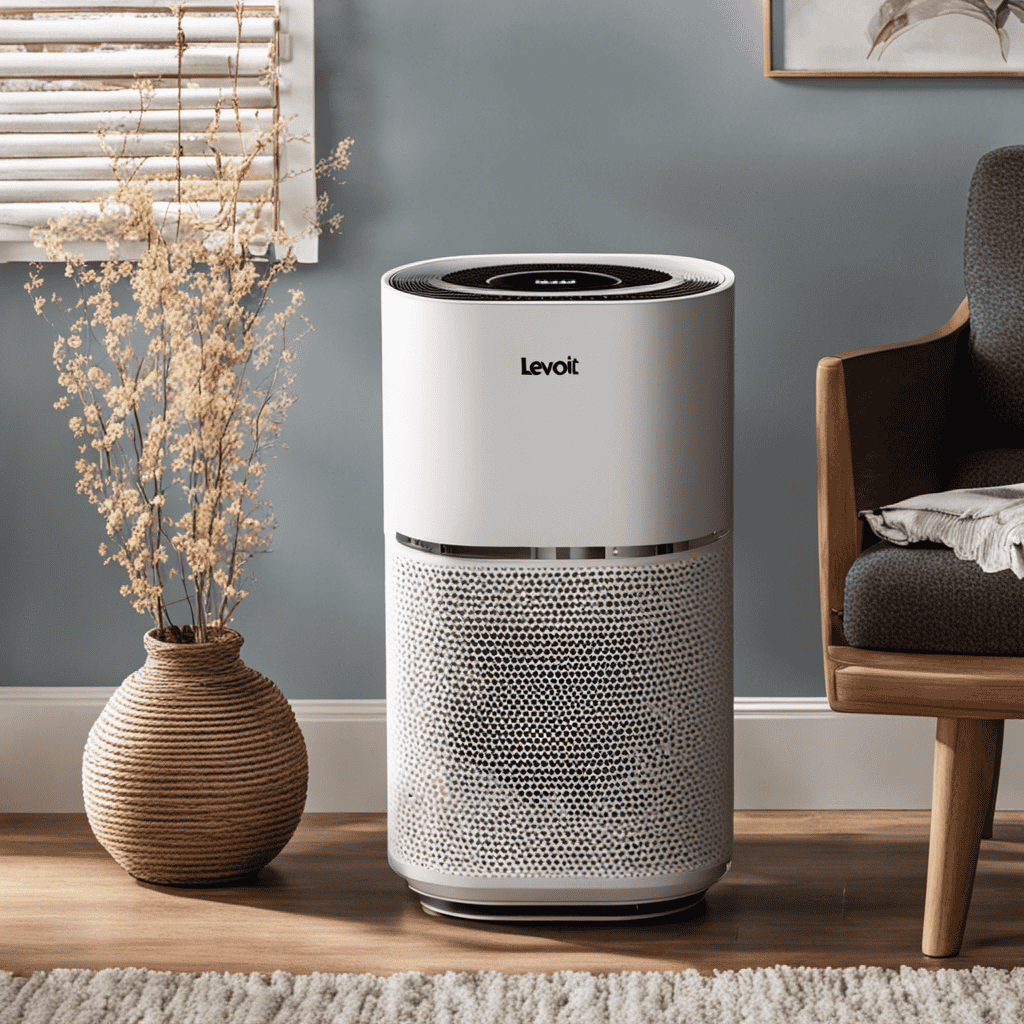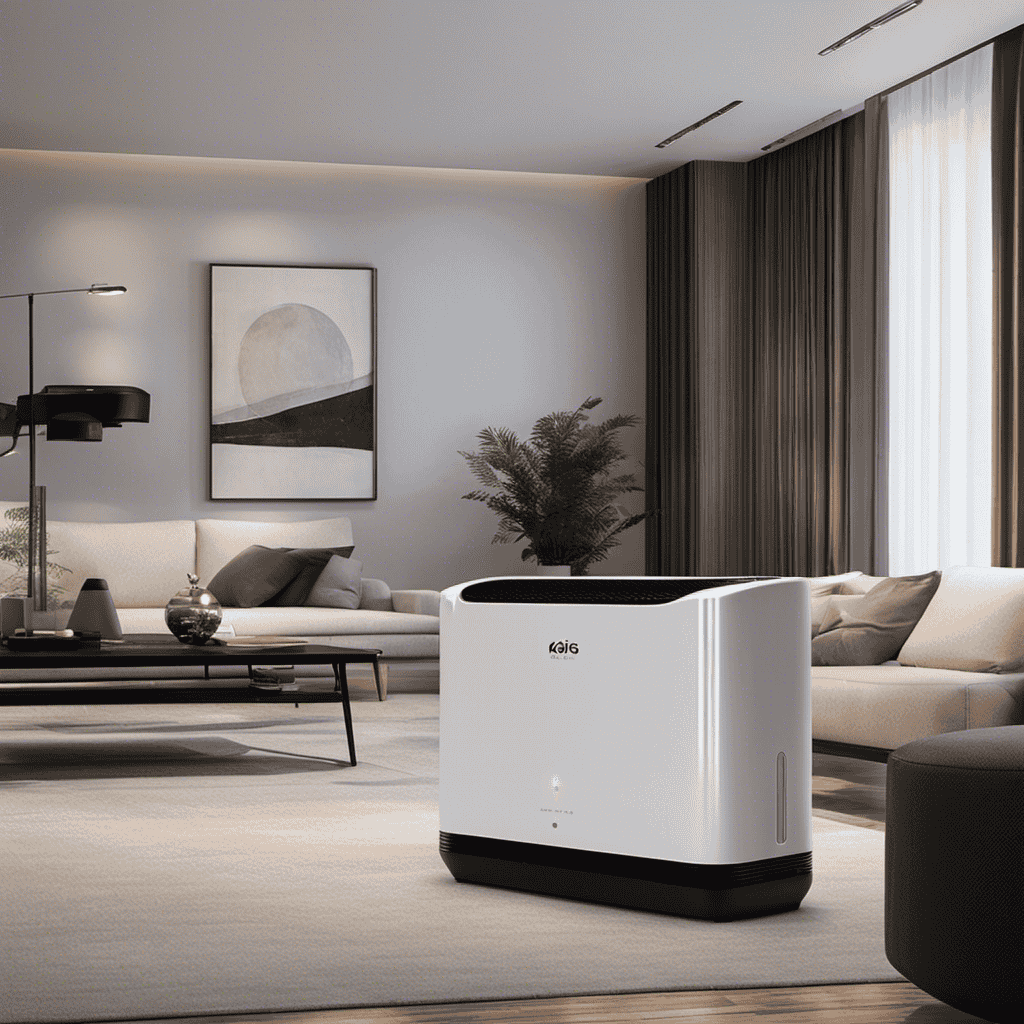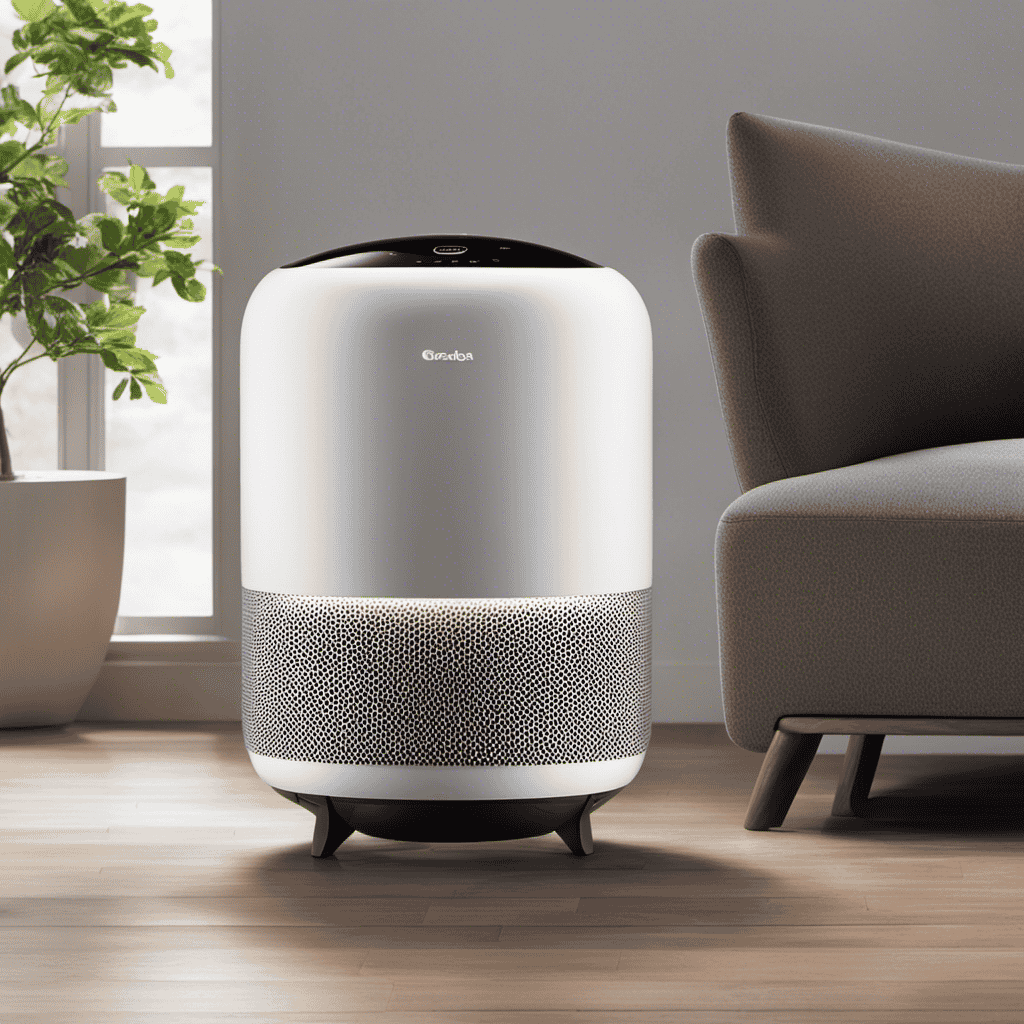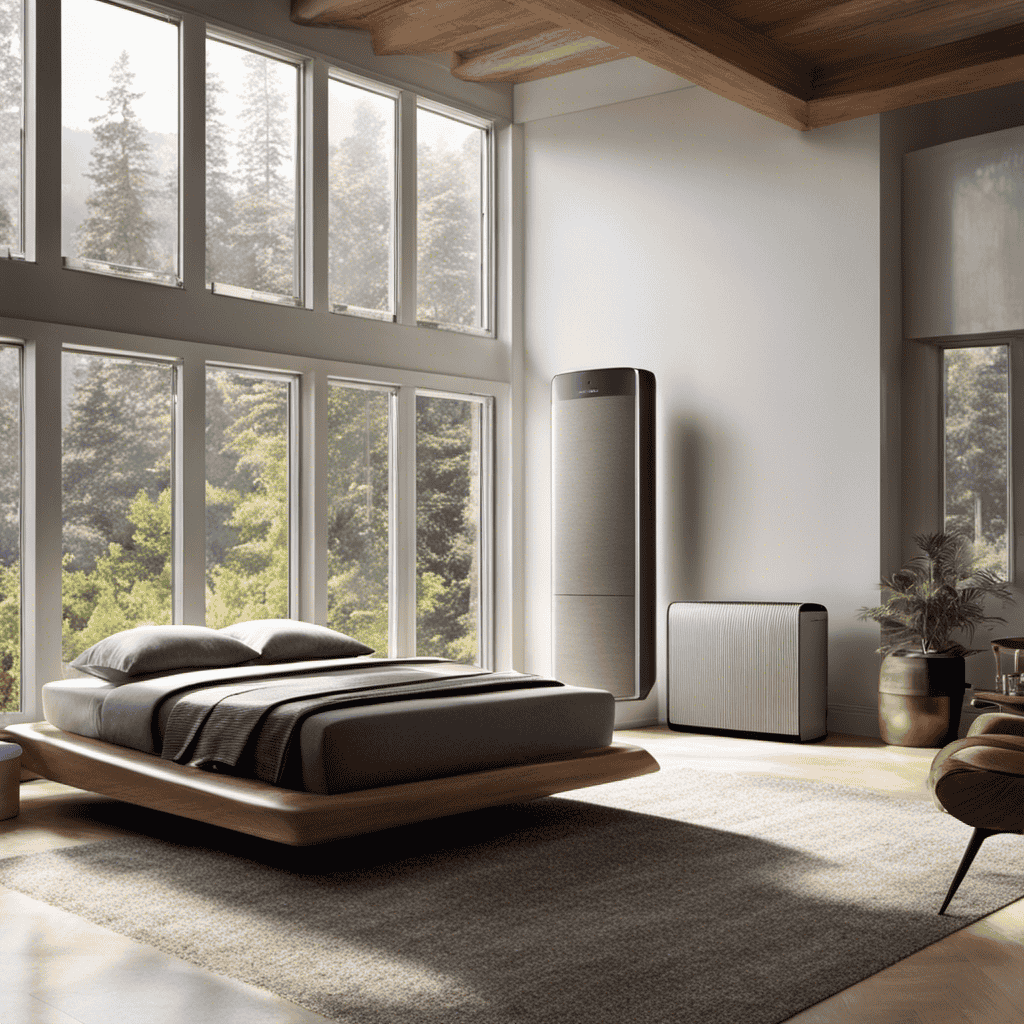Sitting in my living room, I find myself questioning whether my portable air purifier is truly effective. Is it quietly purging the air of pollutants, or is it merely serving as an ornamental piece?
In this article, I will guide you through the process of determining whether your portable air purifier is truly working. We will delve into the inner workings of air purifier technology, explore the signs of improved air quality, and learn how to monitor its performance.
So, let’s embark on this scientific journey to ensure clean and fresh air in our homes.
Key Takeaways
- Regular maintenance, including cleaning or replacing filters, ensures the effectiveness of the air purifier.
- Signs of improved air quality include reduced dust accumulation on surfaces, decreased allergy symptoms, and enhanced respiratory health.
- Monitoring air purifier performance helps ensure continuous removal of indoor pollutants and identifies potential issues for timely maintenance or repairs.
- Regularly replacing filters every 6 to 12 months is essential for optimal performance and reducing indoor air pollution.
Understanding Air Purifier Technology
To understand how your portable air purifier is working, you need to know the basics of air purifier technology.
Air purifiers work by using filters to remove pollutants and allergens from the air. The most common types of filters used in air purifiers are HEPA filters and activated carbon filters.
HEPA filters are highly effective at capturing small particles like dust, pollen, and pet dander, while activated carbon filters are great at absorbing odors and chemicals.
It is important to regularly clean or replace these filters to maintain the effectiveness of your air purifier. Additionally, air purifier maintenance includes cleaning the unit itself, checking for any blockages, and ensuring proper airflow.
Regular maintenance will ensure that your portable air purifier is working efficiently and providing you with clean and fresh air.
Signs of Improved Air Quality
You can tell the air quality has improved when you notice a decrease in dust and allergens in your home. As someone who suffers from allergies, I have experienced firsthand the positive impact of improved air quality.
Here are three signs that indicate a decrease in indoor pollutants and the subsequent health benefits:
-
Reduction in dust accumulation on surfaces: When the air quality improves, you will notice less dust settling on furniture and other surfaces in your home. This is because the air purifier is effectively capturing and removing airborne particles.
-
Decreased allergy symptoms: Improved air quality means a decrease in allergens such as pollen, pet dander, and mold spores. As a result, allergy sufferers may experience a reduction in symptoms like sneezing, coughing, and itchy eyes.
-
Enhanced respiratory health: Breathing cleaner air can have significant health benefits, especially for individuals with respiratory conditions like asthma. With reduced indoor pollutants, you may notice improvements in breathing, lung function, and overall respiratory well-being.
These signs of improved air quality and their associated health benefits highlight the importance of using an air purifier in your home. By monitoring air purifier performance, you can ensure that it continues to effectively remove indoor pollutants and provide clean, healthy air for you and your family.
Monitoring Air Purifier Performance
Monitoring the performance of my air purifier is essential for ensuring it effectively removes indoor pollutants and provides clean, healthy air. One important aspect of monitoring is keeping track of the air purifier filter replacement schedule.
Regularly replacing the filters is crucial for maintaining the purifier’s efficiency. A clogged or dirty filter can restrict airflow, reducing the purifier’s ability to capture and remove pollutants. By following the manufacturer’s recommendations for filter replacement, I can ensure that my air purifier continues to work effectively.
Additionally, monitoring the performance of my air purifier allows me to assess the benefits of using it. I can observe improvements in indoor air quality, such as reduced dust, allergens, and odors. Monitoring also helps me identify any potential issues or malfunctions, enabling timely maintenance or repairs.
Common Issues and Troubleshooting
Experiencing problems with your air purifier? Don’t worry, troubleshooting common issues can help you get your purifier back on track. Here are some troubleshooting tips to help you identify and resolve any problems you may encounter:
-
Check the power supply: Ensure that the air purifier is properly plugged in and that the power source is functioning correctly.
-
Clean or replace filters: Clogged or dirty filters can hinder the performance of your air purifier. Regularly clean or replace them to maintain optimal efficiency.
-
Monitor air quality readings: Many air purifiers come with built-in sensors that measure the air quality. If the readings are consistently poor, it may indicate a problem with the purifier’s functionality.
Maintaining and Cleaning Your Portable Air Purifier
Regularly cleaning and maintaining your portable air purifier is essential for optimal performance and to ensure that it continues to provide clean and fresh air. One important aspect of maintenance is regularly replacing the filters. Filters trap dust, pollen, pet dander, and other particles, but over time they become clogged and less effective. As a general rule, it is recommended to replace the filters every 6 to 12 months, depending on the manufacturer’s instructions. This ensures that the air purifier continues to function efficiently and effectively. Additionally, there are some tips that can help reduce indoor air pollution, such as keeping the windows closed during high pollen seasons, using an exhaust fan while cooking, and regularly vacuuming and dusting. By following these maintenance tips and reducing indoor air pollution, you can ensure that your portable air purifier works optimally and provides clean and fresh air for you to breathe.
| Importance of regular filter replacement | Tips for reducing indoor air pollution |
|---|---|
| Regular filter replacement ensures optimal performance | Keep windows closed during high pollen seasons |
| Filters trap dust, pollen, and pet dander | Use an exhaust fan while cooking |
| Replace filters every 6 to 12 months | Regularly vacuum and dust |
| Ensures air purifier functions efficiently | Avoid smoking indoors |
Frequently Asked Questions
Can a Portable Air Purifier Remove All Types of Pollutants From the Air?
Yes, a portable air purifier can remove all types of pollutants from the air. Different types of portable air purifiers use various filtration methods to effectively eliminate dust, pollen, pet dander, smoke, and other contaminants. Using a portable air purifier offers numerous benefits, including improved indoor air quality and reduced allergy symptoms.
How Often Do I Need to Replace the Filters in My Portable Air Purifier?
I replace the filters in my portable air purifier every 3 to 6 months. It’s important to clean the fan blades regularly as well. Portable air purifiers can be used in cars to improve air quality.
Can a Portable Air Purifier Get Rid of Pet Dander and Odors?
Yes, a portable air purifier can effectively remove pet dander and odors. It’s one of the many benefits of using a portable air purifier, ensuring cleaner and fresher air in your home.
Are There Any Safety Precautions I Need to Take While Using a Portable Air Purifier?
While using a portable air purifier, it’s important to follow safety precautions. Regular maintenance ensures its effectiveness. Benefits of using a portable air purifier include removing allergens and improving indoor air quality.
Can a Portable Air Purifier Help With Allergies and Asthma Symptoms?
Yes, a portable air purifier can help with allergies and asthma symptoms. It filters out airborne particles like dust, pollen, and pet dander. It’s a convenient option for small spaces compared to a whole house air purifier.
Conclusion
In conclusion, it is essential to understand how to know if your portable air purifier is working for maintaining a healthy indoor environment.
By monitoring air quality, looking for signs of improved air quality, and troubleshooting common issues, you can ensure that your air purifier is effectively removing pollutants.
Remember to regularly clean and maintain your purifier to optimize its performance. With this knowledge, you can breathe easy, knowing that your portable air purifier is keeping your space fresh and clean.
It’s like a breath of fresh air on a sunny day.
